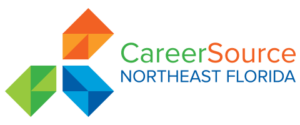(Courtesy of the Jacksonville Business Journal) – Amazon.com’s rapidly expanding presence in Florida is more of a testament to the state’s booming population than its transportation network.
“Look at when we have a hurricane and there’s congestion on Interstate 75 and 95,” said Ryan Vaught, executive managing director of industrial services at Colliers in Tampa. “We have two north-south thoroughfares in the third-most-populous state in the country.”
The ecommerce giant has massive fulfillment centers and last-mile delivery stations throughout the state. In 2020, as the novel coronavirus pandemic caused a surge in online shopping, Amazon ramped up the pace of its real estate leasing and development in Florida.
Vaught spoke with the Business Journal on Amazon’s Florida expansion and what it means to the state’s transportation network. This interview has been edited for brevity and clarity.
Let’s talk about the significance of Amazon’s air cargo hub in Lakeland. What does that mean to the company’s Florida presence?
It’s indicative of the priority. Florida is being treated as an isolated piece of the supply chain, with 22 million people surrounded by water on three sides, I think you have to treat it differently. That investment and the already planned expansion certainly signals something.
I would pontificate that the air cargo hub is a counterpoint to saying that Florida has good infrastructure. That’s more philosophical, but it’s tough to get product down here.
I think the bigger answer is the air cargo hub, combined with the CSX intermodal facility in Winter Haven, along with the Port of Jacksonville and Port of Miami, means that we’re starting to be able to represent a four-option, intermodal solution to transportation. I think that combination is where the strength is.
How does the CSX intermodal facility factor in? It hasn’t seen much activity yet.
The intermodal yard will be a component of distribution at some point in time. We’ve all seen the growth in Lakeland this cycle, and I think this economic cycle that we’re in currently was more for distributors to plant a flag in the ground in Florida. The next cycle is going to be about optimization and how do you connect air to rail to port? But you can’t optimize if you don’t have a starting spot. Look at how many people have invested in the I-4 corridor this cycle that never had a presence here.
Where do seaports factor in Amazon’s Florida strategy?
Seaports, to the best of my knowledge, are not a huge driver for Amazon in Florida. But for distributors in general — depending on the proximity to certain seaports and the depth of the channel, it matters. I can tell you we’ve done multiple deals that proximity to the seaport was factor. I think this shift or change in the supply chain that’s happened over the last 10 years — I think we’re in the infancy, not the conclusion.
The next cycle will be about optimization of the final mile and how do you minimize transportation costs? Because candidly real estate for a distributor is a super super small part of their overall P&L. Transportation is over 50 percent of operating costs, and real estate is 5 to 8 percent of the costs. The savings on transportation to far outweigh saving money on real estate.
